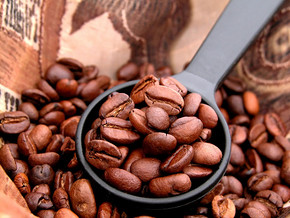Brazil pectin sun coffee beans processing method introduction
Pay attention to coffee reviews (Weixin Official Accounts vdailycom ) and find a beautiful cafe to open your own shop
Brazilian pectin sun coffee beans
When it comes to solarization, Brazil is the most widely used; the disadvantage of solarization is that it is easy to mix defective beans, and the appearance between beans is poor.
Dry treatment (secado), also known as natural full sun method (natural).

Sunlight method is a kind of processing method of coffee fruit, its processing method is coffee cherry after harvest in the sun for 3~4 weeks, evenly turned several times a day, coffee cherry evenly heated, dried coffee fruit core and skin will be separated, and then to peel off the pulp, peel.. Wait, the screening is done. There are two methods of fermentation, wet and dry, as the name suggests, the former with water, the latter without water. During the alcoholization process, the seeds and internal pulp will undergo special changes, which is one of the most influential steps in the water washing method. After washing, the coffee beans are still wrapped in the inner skin. The moisture content reaches 50%. They must be dried to reduce the moisture content to 12%. Otherwise, they will continue to be alcoholized and become moldy. The better treatment is to use sunlight drying, although it takes 1 - 3 weeks, but the flavor is excellent and quite popular. In addition, some places use machine drying, greatly shortening the processing time, so that the flavor is not as good as the sun dried coffee Brazilian coffee field endless, mostly mechanical harvesting, in order to meet economic benefits. When 75% of the coffee fruit in the coffee garden turns red, the mechanical harvesting is started, followed by the same pre-operation of washing, which is transferred to the sink to remove the floating beans, sifting out the sunk beans, and then using a large pulp sifter to remove the pulp and remove the pods covered with pectin. The next stage is separate from the washing method: instead of moving the sticky pods to a tank for fermentation, they are moved to an outdoor drying field. Due to the dry climate in Brazil, the sticky pectin on the pods hardens in about a day.
Then use a lot of manpower to turn up and down, so that the pod evenly dry inside and outside, so as not to regain moisture and stink, about two to three days with the help of sunlight and dry weather natural forces, the pod can reach a certain degree of dehydration. Then further drying in a dryer, the moisture content is reduced to 10.5--12%, and then the pods are stored in a special container for about ten days, further ripening, in order to stabilize the quality, and then grinding off the sheepskin (i.e. pods) before export, take out the coffee beans, and classify the packaging. Mucous membrane adhesion is very strong, and not easy to remove, must be placed in the tank about 18-36 hours, so that its alcohol, and decomposition of the mucosa. Coffee fruit after picking, directly in the sun drying, depending on the weather conditions, generally to dry 1- 2 weeks, so that the water content of coffee beans reduced to 10%-12%, and then remove the dry peel pulp with a machine. Green bean processing plants (beneficio) generally retain the parchment (pergamino) on the outside of the coffee beans during storage until they are removed before export (Costa Rican law states that green coffee beans cannot be exported with parchment). This treatment generally requires sufficient sunlight in the area of origin.
Important Notice :
前街咖啡 FrontStreet Coffee has moved to new addredd:
FrontStreet Coffee Address: 315,Donghua East Road,GuangZhou
Tel:020 38364473
- Prev

Varieties of Brazilian coffee beans, roasting of Brazilian coffee
Following caf é (Wechat official account vdailycom) found that Beautiful Cafe opened a small shop of its own when it comes to the origin of coffee, the first thing that comes to mind is Brazil in South America, because it is the largest coffee producer in the world. There is a wide variety of Brazilian coffee, the vast majority of which are unwashed and sun-dried, classified according to the name of the state of origin and the port of transport. Brazil has 2.
- Next

Brief introduction of Brazilian Coffee beans Flavor characteristics of Brazilian Coffee and Brazilian Queen Coffee
Following Cafe Review (Wechat official account vdailycom) found that Fairview Cafe opened a small shop of its own Brazilian coffee beans refers to all the coffee beans grown in Brazil, except for more than three companies, Brazilian beans are mostly cheap and high-quality coffee. Comprehensive coffee beans that can be used for mass production, most of them
Related
- Detailed explanation of Jadeite planting Land in Panamanian Jadeite Manor introduction to the grading system of Jadeite competitive bidding, Red bid, Green bid and Rose Summer
- Story of Coffee planting in Brenka region of Costa Rica Stonehenge Manor anaerobic heavy honey treatment of flavor mouth
- What's on the barrel of Blue Mountain Coffee beans?
- Can American coffee also pull flowers? How to use hot American style to pull out a good-looking pattern?
- Can you make a cold extract with coffee beans? What is the right proportion for cold-extracted coffee formula?
- Indonesian PWN Gold Mandrine Coffee Origin Features Flavor How to Chong? Mandolin coffee is American.
- A brief introduction to the flavor characteristics of Brazilian yellow bourbon coffee beans
- What is the effect of different water quality on the flavor of cold-extracted coffee? What kind of water is best for brewing coffee?
- Why do you think of Rose Summer whenever you mention Panamanian coffee?
- Introduction to the characteristics of authentic blue mountain coffee bean producing areas? What is the CIB Coffee Authority in Jamaica?

